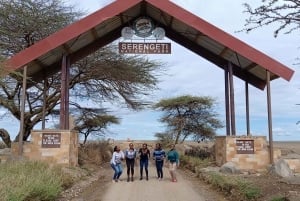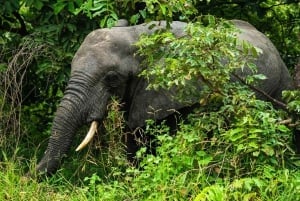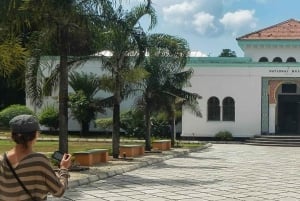Geography & History
Tanzania is East Africa's largest country, with about 1,400 kms of coastline along the Indian Ocean. It is bordered by Burundi, Kenya, Malawi, Mozambique, Rwanda, Uganda, Zambia and the Democratiic Republic of Congo, and has a land mass of 945,087 sq kms. Through the interior runs the Great Rift Valley, where this has created many fascinating topographical features, such as Ngorongoro Crater and Lake Tanganyika.
Whilst the central plateau is made up of expanses of savannah and sparse woodland, the interior is largely arid. Tanzania's 800 kms of coastlines is lush and palm fringed as are the islands of Zanzibar, Pemba and Mafia, The country's highest point at 5895 meters is Mount Kilimanjaro, which is also the highest point in Africa. Tanzania's largest lake is Lake Victoria and the main river is the Rufiji.
Tanzania's natural resources consists of natural gas, gold, diamonds, nickel, cobalt, copper and base metals, gemstones (apatite, nioblum, tanzanite), iron ore, coal, hydropower, tin, phosphates, fisheries and forests.

Tanzania has a rich and fascinating history and is the 'cradle of mankind'. It was at Olduvai Gorge, that the fossilised remains of homo habilis were discovered, calculated to be 1.75 million years old, and is the fore-runner to modern man. Since then homo erectus evolved, making way for clans of hunter gatherers and cattle herders, who which over the years settled in what is modern day Tanzania.
Arab Traders arrived 2000 years ago on the east coast of Africa who were followed by Islamic settlers. The inter marriage of Arabs and the local population created the Swahili language and culture. Portuguese sailors arrived on the East African coast in the 16th century where they set up trade in slaves and ivory that lasted for 200 years. The Portuguese were ousted by the Omanis in the late 17th century, who developed the infamous export slave trade, which thrived until it was abolished under pressure from the Bristish Consul in 1873.
In the scramble for Africa in the late 19th century, Tanganyika, what was once Tanzania mainland became occupied by Germans and by the British in Zanzibar. After World War 1 Germany surrendered its Tanganyika territory to the British, who ruled until its independence was achieved in 1961. Zanzibar gained independence two years later, and not long after, joined with mainland of which is now known as the United Republic of Tanzania.












